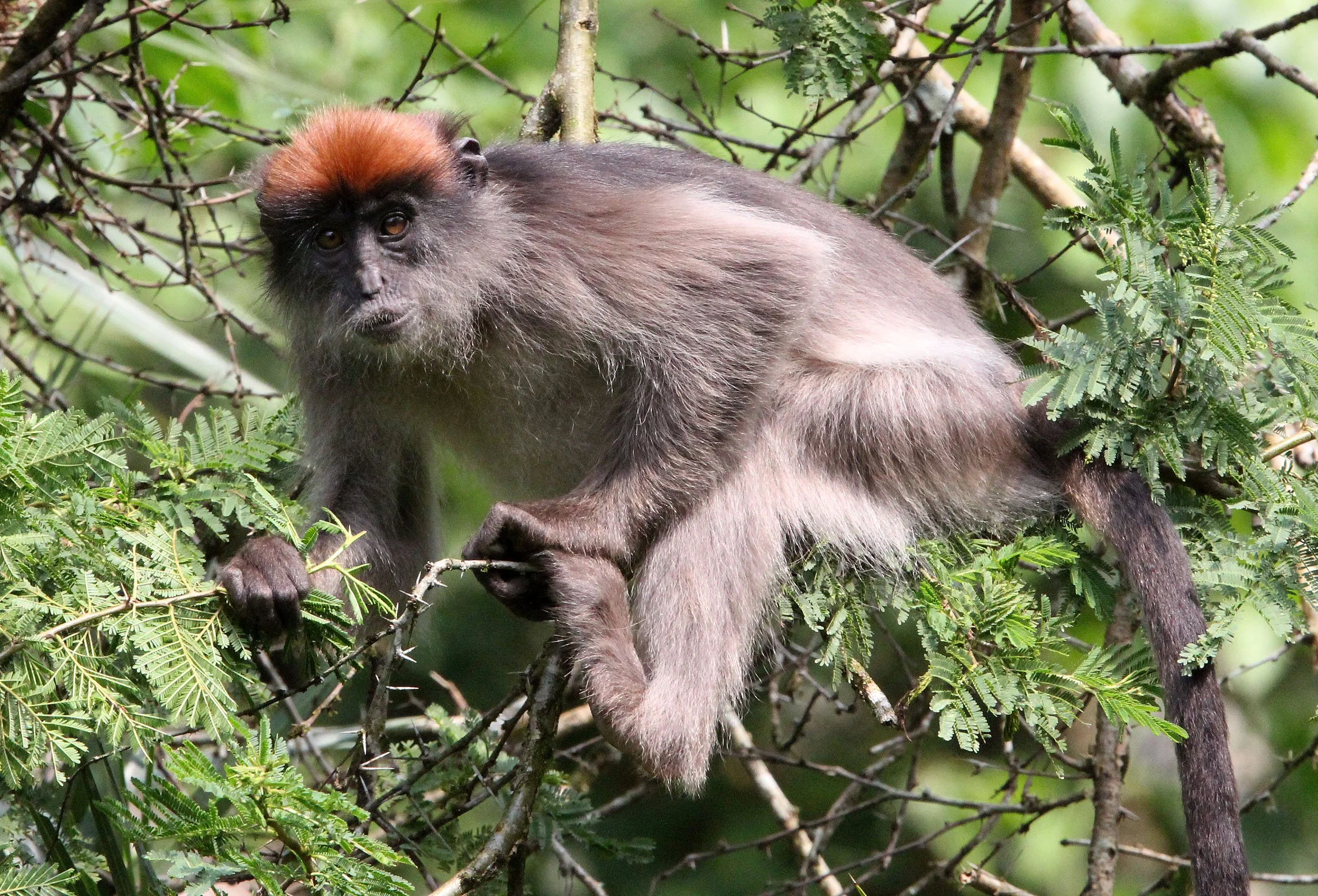The Ugandan red colobus, like all colobus monkeys, has thumbs which are so reduced in size they are almost absent. It is thought this feature may help in brachiation when moving through the canopy.
There is strong sexual dimorphism; the males are much larger than the females. The average male weighs around 10.5 kg and the females weigh around 7 kg.
The Ugandan red colobus is found only in Africa. It has a distribution spanning 1000 km of East Africa but populations are only found in 5 separate forested areas. These areas are in west Tanzania at the edge of Lake Victoria, in Gombe and Mahale Mountains at the edge of Lake Tanganyika, on the Ufipa Plateau and in west Uganda in Kibale National Park. The Ugandan population is the largest and it has been suggested that this is the only viable population with around 17,000 individuals. It is possible, though yet to be verified, that the Ugandan red colobus might also be located in Rwanda, Burundi and the eastern Democratic Republic of the Congo.
The habitat of the Ugandan red colobus varies by population. Kibale National Park, Uganda, inhabited by the largest population, is a moist evergreen tropical forest. Kibale National Park has been a protected area since 1993. Before 1993 parts of the forest were subject to logging of different degrees of severity. The habitat of the Ugandan red colobus in the Mbisi Forest Reserve on the Ufipa Plateau is fragmented and severely degraded. Unlike Kibale where significant expanses of undisturbed forest remain.



































































































